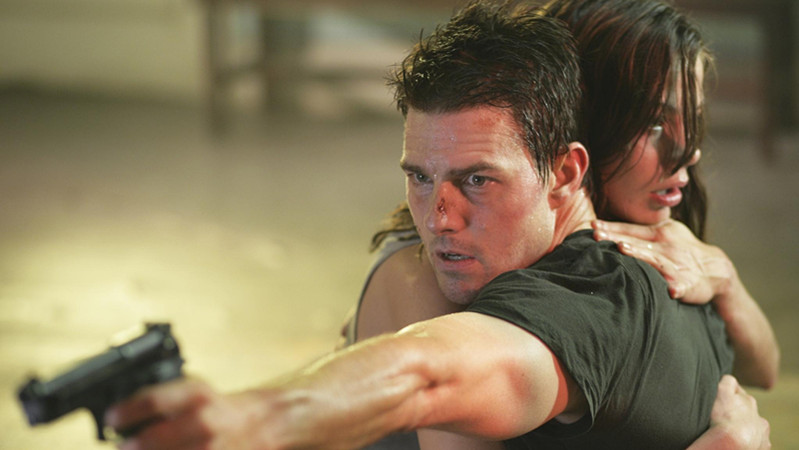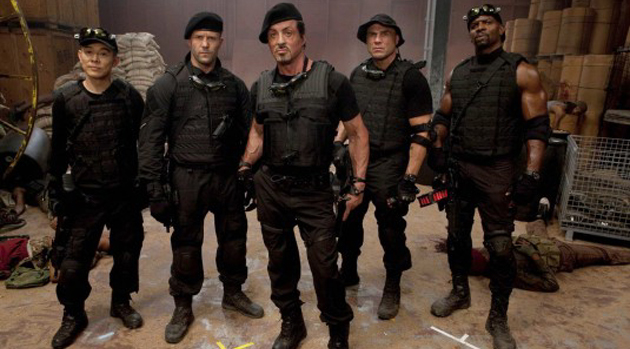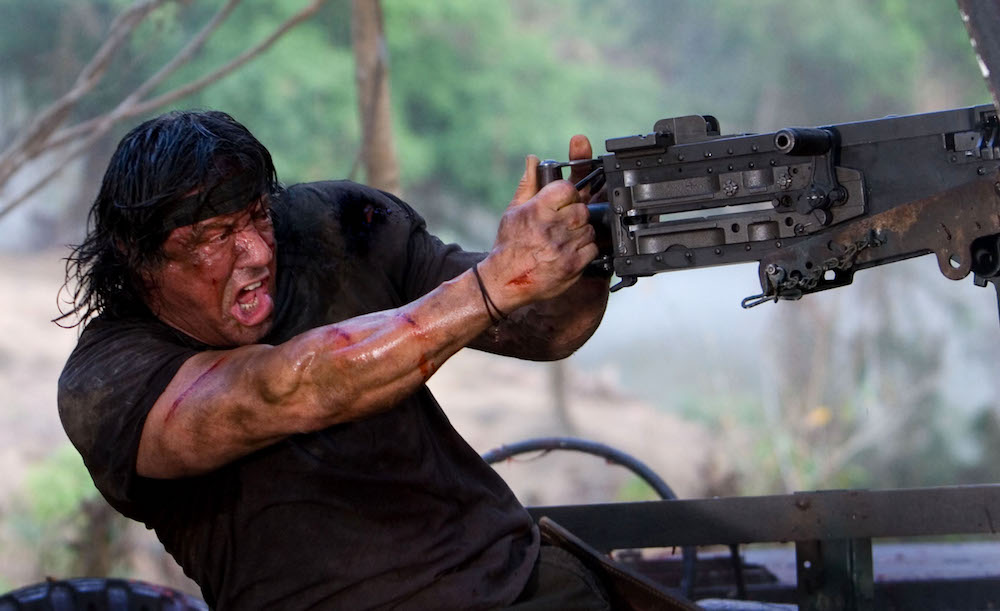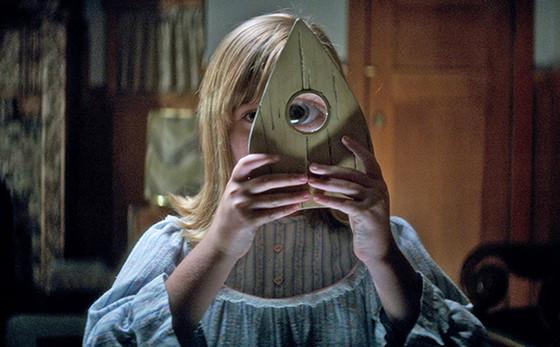
There are countless articles on the internet about sequels that were (arguably) better than their predecessors. We’ve heard all about how Aliens, The Godfather Part 2, and The Dark Knight are fantastic sequels to already great movies. It’s a bit harder to find good sequels to bad, or at least below average movies. That’s because very few of them actually exist.
Generally speaking, if a series starts to tank, it keeps on tanking. Nobody is expecting the Transformers series to suddenly escalate in quality. Viewers know what to expect from every subsequent release. Every so often though, you get a movie sequel that seemingly comes out of nowhere and catches just about everybody by surprise.
It’s such a rarity that coming up with ten films was actually surprisingly difficult. There were certainly plenty of examples of bad films that had slightly improved sequels, but few people can argue that marginal improvements in quality actually result in a good movie.
Keep in mind that we’re talking about immediate predecessors only, not an overall series. So just because Jurassic World appears in the list doesn’t mean that this list is implying that the original Jurassic Park is bad. However, if the whole series is considered lackluster, then that’s even more of an accomplishment.
10. Friday the 13th: Part VI: Jason Lives

With how popular the Friday the 13th series is, many forget that in general, almost every single entry in the series has been critically panned. While the series often gets grouped in with The Nightmare on Elm Street and Halloween, it hasn’t received nearly the same type of critical success as either of those franchises. In fact, even the first film in the franchise received negative reviews upon release. Retrospective reviews have definitely been kinder, but the general consensus is that it’s far from a perfect slasher.
The sequels fared even worse. The Final Chapter has its defenders, but most people agreed that the Friday the 13th series was slowly becoming more and more of a joke. Then came the sixth entry in the series, Jason Lives, and there was some sort of renewed hope.
The problem with the Friday the 13th sequels prior to number six was that they were all so derivative and cliche. The followed a very safe slasher formula which felt stale almost immediately. Jason Lives still followed somewhat closely to that formula in terms of plot, but it also added some much needed fun to the Friday the 13th series.
The release of Jason Lives felt crucial because the previous entry, A New Beginning, felt like a serious low-point in the series. Though it also took some risks that the previous entries didn’t bother with, the risks taken in the fifth film ended up harming the quality. Jason Lives took risks that felt fresh and unique. It added metahumor in a way that helped pave the way for future films like Scream and Wes Craven’s New Nightmare. Additionally, it spliced in action scenes in order to stop the constant slashing from feeling redundant.
The movie still featured Jason going after teenagers, but it did so in a way that was unique and interesting. Along with the clever self-referential humor, Jason Lives also modified who Jason was as a character. Changing Jason into a more supernatural character may have hindered the series later on (especially when the series jumped the shark with Jason X), but it felt fun at the time.
Actually, that’s the best adjective to describe Friday the 13th: Part VI. It was undeniably fun, and that felt so important after every subsequent entry in the series became more of a slog. Was it necessarily intelligent? Absolutely not, but it still offered some sort of hope in a series that was on its last legs. It’s a shame that future entries in the series were unable to take note of this movie’s accomplishments, but it was still nice to have some sort of high point to break up the monotony.
9. The Expendables 2

The Expendables is mediocre, The Expendables 2 is good, The Expendables 3 is a mess. What makes The Expendables 2 the best entry in an otherwise mediocre series? Well, it offers the same kind of bat-shit insanity but it also has a half-way coherent plot. The first and third entries in the series are borderline incomprehensible. Movies that put action first have potential to still be good movies, but if they’re going to sacrifice plot for action, they need to make sure the plot still makes sense, even if it’s bare-bones.
So no, The Expendables 2 isn’t a movie with nuance or wit, but it’s one that at least stays together from the beginning to the end. This generally solid plot helps segue into thrilling action scenes. These scenes of non-stop chaos offer up some jaw-dropping moments that will leave viewers craving more by the time the credits roll. Furthermore, the ensemble cast helps liven up the already by putting everything they’ve got into their roles.
It’s a shame that The Expendables 3 didn’t take notice, because the series had potential to be one of the best “dumb-fun” film franchises out there. Viewers are encouraged to skip the first and third of the series. Jump straight to number two and stop there. If you’re looking for barbaric pleasure, you’ll be happy you did.
8. The Devil’s Rejects

Rob Zombie is a fairly divisive horror movie director. Despite earning a critical beating, his remake of Halloween had a surprising amount of fans. Similarly, The Lords of Salem has developed a very small cult following despite mixed reviews. The two movies Zombie made that generally get the most flak are Halloween II and House of 1000 Corpses. House of 1000 Corpses, his first foray into filmmaking, was criticized for an abundance of subplots, mediocre acting, and a reliance on gore instead of actual scares.
Two years later, Zombie gave audiences a sequel to the movie titled The Devil’s Rejects. Obviously, those two years gave him some time to set his priorities straight because The Devil’s Rejects remains his magnum opus.
The Devil’s Rejects focuses on three members of the family from the original film. In House of 1000 Corpses, these characters seemed like cliche backwoods horror movie villains inspired by The Texas Chainsaw Massacre. In the sequel, audiences were instead treated with three anti-heroes that showed signs of actual humanity.
That is why The Devil’s Rejects is such a success. It, unlike its predecessor, focuses on the character. It still uses violence to get a reaction out of the audience, but it actually gives the audience characters that are fairly interesting. Framing the original antagonists as anti-heroes provides for some fascinating backstory that seriously differs from the sloppy character development of House of 1000 Corpses.
Also helping the movie become a success is Zombie’s usually stylistic direction. This is usually the highlight of all of his horror films. The issue with his other movies is that style is often put above all else. In the case of The Devil’s Rejects, the stylized film is accompanied by an engaging plot and well-developed characters. So instead of getting a movie that puts looks over everything, we get a movie that balances some sort of intelligence with undeniable style. The end result is not a masterpiece, but it’s definitely a memorable outing from Rob Zombie.
7. Rambo (2008)

First Blood is a very different movie than all of its sequels, including this one. The original First Blood was a more dramatic tale of a man struggling with PTSD. The sequels instead took a more “balls-to-the-walls” action approach. The problem was not that the first two Rambo sequels took a different approach. It was definitely disappointing that they were more action focused, but that wasn’t a deal breaker. The problem was that they were genuinely bad movies with convoluted plotting and lackluster performances. Even worse, they weren’t even particularly fun to watch.
The fourth Rambo film actually didn’t get great reviews, but people generally seem to agree that critics were a bit harsh. The 2008 Rambo wasn’t high art, but it was a well made action movie with 90 straight minutes of well-orchestrated action scenes. The first two sequels had some fun moments, but with sloppy direction, phoned in acting, and all the negative qualities of a “B movie,” they haven’t had the greatest reputation.
The 2008 Rambo is less campy and silly, so it didn’t feel as much like a B movie. B movies can be a ton of fun, but considering the premise of the Rambo movies, maybe that wasn’t the right approach. Rambo chose to go gritty, and tonally, it felt more like First Blood than the sequels.
The gritty tone was not accompanied by a more grounded plot, however. Rambo is still an exercise in excessive violence. Though when the excessive violence is this impressively staged, it becomes sort of a non-issue. Rambo III in particular suffered from sloppy and disoriented action scenes. On the flipside, Rambo (2008) will keep your eyes glued to the screen. Every frame serves a purpose in terms of crafting pulse-pounding moments of combat.
If you are looking for more than 90 minutes of electrifying action, this may not be the movie for you. If you’re looking for a return to the original First Blood, this is also a hard pass. If you’re looking for a movie that takes what the sequels did and improves them substantially, give the latest Rambo movie a try.
6. Ouija: Origin of Evil

The original Ouija is one of the worst mainstream horror movies to see a wide release this decade. It’s a watered down, uninspired mess of a film with mediocre performances and cheap jump scares. How in the world did Ouija: Origin of Evil manage to not just improve upon its predecessor, but completely blow away people’s expectations? The answer probably has a lot to do with director Mike Flanagan, whose previous directing efforts like Huah and Oculus have been standouts in the horror genre.
His skills as a director are on full display in Ouija: Origin of Evil. Most importantly, it seems as though he makes it a point to avoid every issue that plagued the original movie. The scares seem more genuine, the characters are more fleshed out, and the storyline avoids feeling too uninspired. It’s as if Flanagan watched through Ouija dozens of times and took notes. Either that or he just knows horror like the back of his hand.
The beautiful art direction that comes as a result of the period setting is another thing that helps the movie shine. Sure, The Conjuring movies arguably do more justice to their period settings, but that doesn’t mean Origin of Evil’s wonderful use of the time period should be ignored. With so many modern ghost stories, it’s always refreshing to see filmmakers experiment with different era.
It helps even more that the cast is fully committed to giving period appropriate performances. Horror flicks are never well known for good performances, so it’s a pleasant surprise to see the actors and actresses truly trying their best. Specifically, the three leads are all magnificent.
Ouija: Origin of Evil is actually the movie that inspired this list. It’s the perfect example of a good sequel to a bad movie, especially considering how atrocious the original Ouija happened to be. Ouija may have killed it at the box office, but it left so many people disappointment. The sequel’s devotion to improving upon everything that made the original a wreck is admirable.